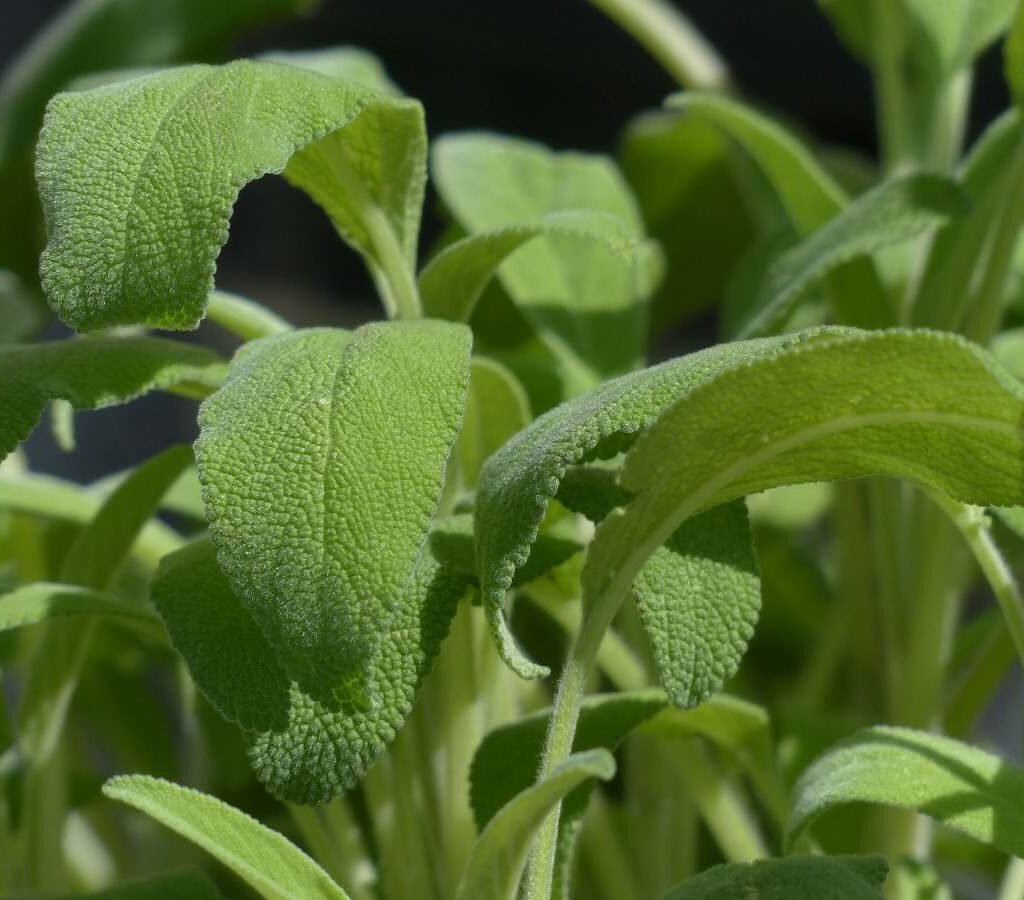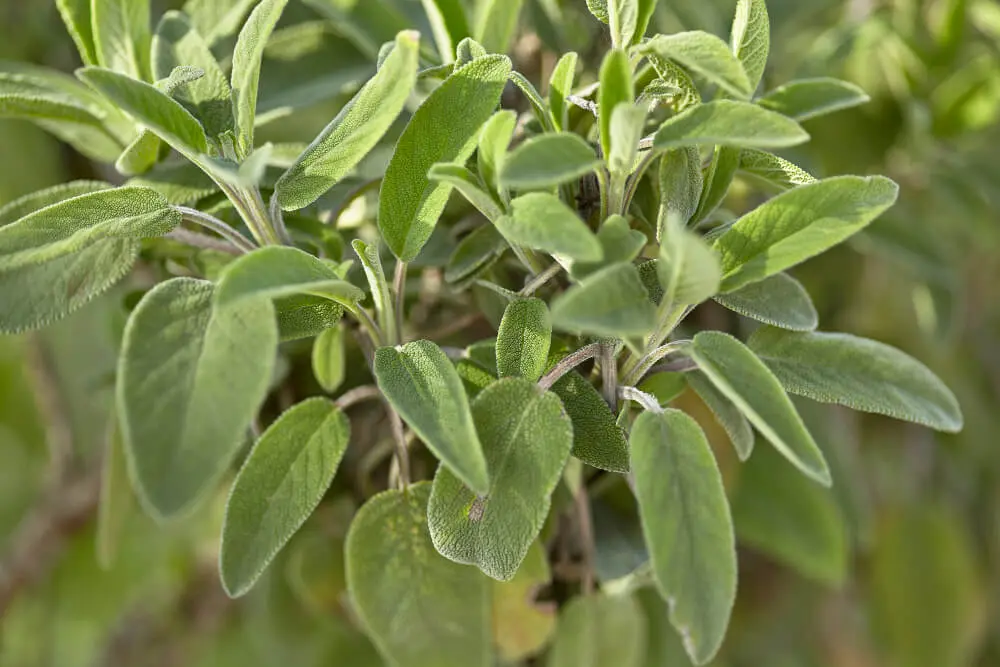Sage (Salvia officinalis) is a perennial herb renowned for its earthy aroma, slightly peppery flavor, and impressive medicinal properties. It has long been valued in cooking for seasoning meats, soups, sauces, and breads, and in herbal medicine for its antioxidant, anti-inflammatory, and digestive benefits. While traditionally grown in garden beds, sage is also perfectly suited for container cultivation, making it ideal for patios, balconies, and indoor kitchens.
Growing sage in containers allows you to enjoy fresh, flavorful leaves year-round, control soil quality, and move the plant to optimize light and temperature conditions. This guide provides a comprehensive roadmap for cultivating sage in containers, covering pot selection, soil, watering, light, pruning, harvesting, and even preserving sage for culinary and medicinal use.
1. Why Grow Sage in Containers

Container gardening offers several advantages for sage:
- Mobility: Move the container to follow the sun or protect from frost.
- Pest management: Reduced risk of ground-dwelling pests and diseases.
- Soil control: Customize soil composition for optimal growth.
- Year-round harvest: Easily cultivate sage indoors or outdoors throughout the year.
By growing sage in containers, both novice and experienced gardeners can enjoy fresh leaves at their convenience.
2. Selecting the Right Container

Choosing an appropriate container is crucial for healthy sage plants:
- Size: Select a pot at least 12 inches deep and 12–16 inches wide to accommodate the root system and allow for growth.
- Material: Terracotta, ceramic, plastic, or wooden pots work well. Terracotta is porous and prevents overwatering but may dry out faster.
- Drainage: Ensure the pot has adequate drainage holes to prevent waterlogging, which can lead to root rot.
Tip: Larger containers promote bushier growth, as sage roots prefer space to spread.
3. Choosing the Right Soil
Sage thrives in well-draining, moderately fertile soil:
- Use a high-quality potting mix with sand or perlite to improve drainage.
- Maintain slightly acidic to neutral pH (6.0–7.0).
- Avoid heavy, clay-rich soils that retain too much water.
A well-draining mix helps prevent root rot and ensures that sage plants remain healthy and productive.
4. Light Requirements

Sage is a sun-loving herb:
- Optimal light: At least 6–8 hours of direct sunlight daily.
- Indoor cultivation: Place containers on a south-facing windowsill or under full-spectrum grow lights for 10–12 hours a day.
- Partial shade tolerance: Sage can survive in partial shade but may become leggy and less aromatic.
Sufficient light is key for producing flavorful leaves and maintaining compact, bushy growth.
5. Watering Sage in Containers
Proper watering is essential for container-grown sage:
- Water when the top 1–2 inches of soil feel dry.
- Avoid overwatering; sage prefers slightly dry conditions rather than consistently wet soil.
- Water at the base of the plant to prevent wetting the leaves, which can lead to fungal diseases.
Tip: Containers tend to dry faster than garden beds, so monitor soil moisture regularly, especially in hot or windy conditions.
6. Fertilizing Container Sage
Sage is a relatively low-maintenance herb when it comes to fertilization:
- Apply a balanced, water-soluble fertilizer once a month during the growing season.
- Over-fertilization can reduce the concentration of essential oils, diminishing flavor and aroma.
- Organic options such as compost or fish emulsion can provide gentle nutrients without overwhelming the plant.
Balanced fertilization ensures healthy growth while maintaining potent flavor and medicinal properties.
7. Pruning and Pinching

Pruning sage encourages bushier growth and prolongs leaf production:
- Pinch new growth regularly to stimulate lateral branching.
- Trim back one-third of the plant in spring to maintain a compact shape.
- Remove any woody or dead stems to encourage healthy regrowth.
- Avoid heavy pruning in late fall or winter, as this can stress the plant during dormancy.
Regular pruning ensures a steady supply of fresh, tender leaves and prevents legginess.
8. Harvesting Sage

Timing and technique are essential to maximize flavor and aroma:
- Begin harvesting when the plant has reached at least 6–8 inches in height.
- Harvest leaves from the top third of the plant, leaving enough foliage for ongoing growth.
- Use sharp scissors or pruning shears to make clean cuts above a leaf node.
- Frequent light harvests encourage continuous production and enhance leaf quality.
Tip: Harvest in the morning after the dew has dried; this is when essential oils are most concentrated.
9. Companion Planting in Containers
Growing sage with other compatible herbs can be beneficial:
- Companion herbs: Rosemary, thyme, oregano, and lavender.
- Avoid: Mint, which can spread aggressively and outcompete sage in shared containers.
- Companion planting optimizes space and can enhance growth through complementary aromas and natural pest deterrence.
10. Pest and Disease Management
Sage is generally hardy, but container cultivation requires vigilance:
- Common pests: Aphids, spider mites, and whiteflies. Treat with neem oil, insecticidal soap, or gentle hand removal.
- Fungal issues: Powdery mildew can occur in high humidity or poor airflow. Prune crowded leaves and provide adequate ventilation.
- Root rot: Prevented by ensuring proper drainage and avoiding overwatering.
Regular inspection ensures a healthy, thriving sage plant.
11. Preserving Sage for Year-Round Use
Container-grown sage can be preserved for culinary and medicinal purposes:
11.1 Drying
- Tie small bundles and hang upside down in a warm, dry, ventilated area.
- Once dry, strip leaves and store in airtight containers away from light.
11.2 Freezing
- Chop leaves and freeze in ice cube trays with water or olive oil.
- Transfer frozen cubes to airtight bags for cooking convenience.
11.3 Herbal Infusions
- Fresh or dried sage can be steeped in hot water to make teas.
- Infusions provide medicinal benefits such as anti-inflammatory and digestive support.
Proper preservation extends the use of sage well beyond the growing season.
12. Culinary Uses of Sage
Sage leaves add distinctive flavor and aroma to a variety of dishes:
- Cooking: Roasts, poultry, pork, sausages, soups, stews, and vegetable dishes.
- Infusions: Sage tea, flavored oils, and herbal vinegars.
- Garnishes: Fresh leaves enhance presentation and flavor of dishes.
Regular harvesting ensures a constant supply of fresh, aromatic leaves.
13. Medicinal Benefits of Sage
Sage is more than just a culinary herb; it has a rich history in herbal medicine:
- Antioxidant properties: Supports cellular health and reduces oxidative stress.
- Digestive aid: Helps soothe indigestion, bloating, and gas.
- Anti-inflammatory: Supports joint and overall wellness.
- Respiratory support: Sage teas or steam inhalation can help relieve mild respiratory issues.
Growing your own sage ensures access to fresh leaves for these health applications.
14. Seasonal Care and Overwintering
Container sage requires special care during colder months:
- Indoors: Move pots to a sunny windowsill or use grow lights to maintain growth.
- Outdoors: Protect containers from frost or bring them indoors.
- Pruning: Trim lightly before winter to maintain structure, but avoid heavy pruning during dormancy.
With proper seasonal care, sage can thrive in containers for several years.
15. Final Thoughts
Growing sage in containers is an excellent way to enjoy fresh, flavorful leaves and medicinal benefits year-round. By choosing the right pot, soil, and location, watering appropriately, and practicing regular pruning and harvesting, gardeners can maintain healthy, productive plants.
Key takeaways:
- Select a deep, well-draining container to accommodate roots.
- Provide 6–8 hours of sunlight or supplemental grow lights indoors.
- Harvest leaves in the morning for maximum aroma.
- Prune regularly to encourage bushy growth and prevent legginess.
- Preserve excess leaves by drying, freezing, or making herbal infusions.
Container sage offers convenience, versatility, and consistent access to a herb that enhances both culinary creations and natural wellness practices. With attention to care and harvesting techniques, your sage plant can thrive for years, providing a constant source of fresh flavor and healthful benefits.
